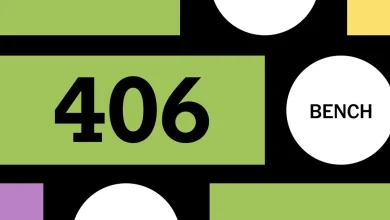Where Edmonton’s new council stands on taxes, infill, provincial jurisdiction

The responses from the public are generally in line with those from the incoming council. About 40% of respondents to Taproot’s survey said they would support increasing taxes in line with inflation and population growth. About 29% said council should lower taxes by cutting spending and another 29% said council should increase taxes to improve quality of life.
Homelessness and housing
Nearly all of the incoming council members said they want to build and operate more supportive housing. Clarke said he would like to fund supportive services to alleviate suffering; Elliott said he didn’t have a position on the issue. No candidate chose the third option, which was to enforce bylaws to manage disorder.
The response from incoming councillors differs substantially from the members of the public who answered our survey. About half said they wanted more supportive housing, about 30% wanted to fund supportive services, and about 20% said they wanted the city to enforce bylaws to manage disorder.
When asked about housing, three incoming council members said they would build housing only if other levels of government contributed, while five said they would vote to build more housing, even without provincial or federal partners. Four said they would vote to lower costs and remove barriers for private and non-profit builders. Paquette added context to his answer: “It’s not complicated. We just need more homes for more people.”
That relatively-even split closely mirrored the response Taproot received from the public.
Infill
Nearly all of the now-elected council members said on the survey that they would slow the pace of infill development. Four returning councillors — Rutherford, Stevenson, Tang, and Wright — said infill should proceed as allowed under the current zoning bylaw. This summer, the outgoing council approved changes to the zoning bylaw to reduce the maximum size of a building and the number of entrances that are permitted to face neighbouring properties in the small-scale residential (RS) zone. It also voted to approve changing the required design for the facade of infill buildings. Administration had proposed restricting the number of units on mid-block lots in the RS zone to six; Mayor Amarjeet Sohi’s motion to keep the limit at eight units passed in a tight vote with Sohi, plus councillors Paquette, Tang, Rutherford, Stevenson, and Wright voting in support.
Elliott was the only councillor-elect to answer the survey’s option to halt further infill development.
Nearly half of the public who filled out Taproot’s survey said they want to slow the pace of infill with stronger regulations. About a quarter of respondents said infill should proceed under the existing rules. The remaining quarter said infill development should stop completely.
Provincial jurisdiction
Edmonton’s new mayor could stand alone in his preferred approach to funding services under provincial jurisdiction. Knack was the only candidate who said that if the city faced pressure to fund services under provincial jurisdiction he would choose to fund the services to ensure quality of life.
Knack told reporters that the city and the province share a common goal and should collaborate. “But again, particularly on housing and homelessness, I’m not going to sit back and wait anymore,” Knack said. “We need to be willing to stand up, to use our voice, to be firm when needed. My goal is always collaboration first, and be firm when I absolutely need to.”
Meanwhile, all other incoming council members (except Elliott, who said he had no position on the issue, and Principe, who didn’t complete the survey) said they would redirect public pressure to secure sufficient provincial funding.
Most of the public who responded the Taproot survey said they too would want the city to redirect public pressure to secure sufficient provincial funding. About 20% said they would want the city to fund services to alleviate suffering and about 18% said they would focus resources on municipal responsibility.
Regional collaboration
Six incoming council members responded on the survey that they would work to re-establish a strong metropolitan approach, including Knack. During the 2023-2026 budget deliberations, Knack introduced a motion to provide $13 million in annual funding to the Edmonton Metropolitan Transit Services Commission (he was on the board), to establish a shared regional transit system, but the motion failed. Then-councillors Tim Cartmell, Sarah Hamilton, Jennifer Rice, and Principe had supported the funding request. Buts everal of the council members who voted against the motion said they did so because they didn’t see how the funding would return enough benefit to Edmonton residents.
Regional collaboration received another blow in 2024, when the provincial government said it would stop providing funding for growth management boards in Edmonton and Calgary, and that membership would no longer be mandatory. The Edmonton Metropolitan Region Board dissolved in 2025.
When it comes to the public, nearly half of those who filled out our survey said the city should re-establish a strong metropolitan approach. About a third said that collaboration should be limited to certain projects, and about 20% said Edmonton should focus on its own goals.
Bike lanes
None of the incoming council members answered our survey with the option of rolling back plans for bike lanes and active transportation infrastructure. Seven said they would build only the bike lanes that have already been planned and four said they would build more than is planned (Clarke said he didn’t have a position on the issue).
Active transportation projects in north Edmonton in particular were put under the microscope earlier this year when Alberta Transportation Minister Devin Dreeshen visited the Delton neighbourhood to hear from concerned residents.
The public that responded to the Taproot survey was split rather evenly on bike lanes. About 37% said the city should only build what has been planned, 26% said it should build more than is planned, and 37% said it should build less than is planned.
Development south of 41 Avenue SW
Ten of the incoming council members indicated they wouldn’t support opening up the lands south of 41 Avenue SW for development — at least, not yet. Six incoming council members said they would like neighbourhoods to be “substantially complete” before new ones are started in more distant communities. Four said Edmonton should have a firm growth boundary, including new councillor Clarke, who added context to his answer: “I think there is still lots of land development opportunities with our city limits, whether that is inside or outside Anthony Henday (Drive). I would like to see those areas developed (especially inside the Henday, like Blatchford and Northlands) before we look to expand the city boundaries for increased expansion.”
When it came to the public, only about 17% said the city should expand as the market demands. About 55% said the city should finish what’s started first, and about 30% said the city should set a firm growth boundary.
What’s next?
Council is set to be sworn in on Oct. 29. The mayor and councillors will undergo training before the first public hearing on Nov. 19. Council will deliberate the 2024 fall budget adjustment starting on Dec. 1.





